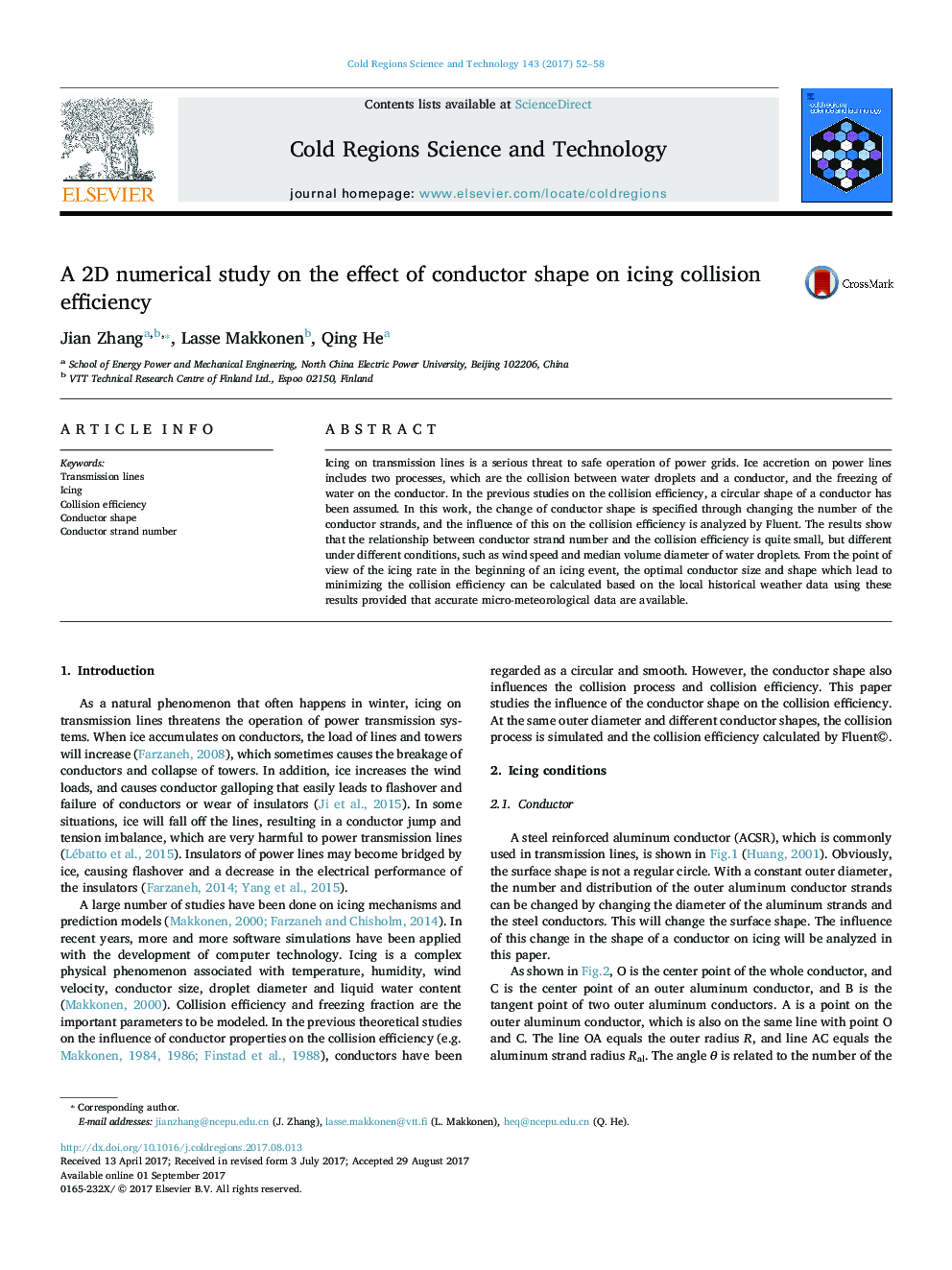| Article ID | Journal | Published Year | Pages | File Type |
|---|---|---|---|---|
| 5779379 | Cold Regions Science and Technology | 2017 | 7 Pages |
Abstract
Icing on transmission lines is a serious threat to safe operation of power grids. Ice accretion on power lines includes two processes, which are the collision between water droplets and a conductor, and the freezing of water on the conductor. In the previous studies on the collision efficiency, a circular shape of a conductor has been assumed. In this work, the change of conductor shape is specified through changing the number of the conductor strands, and the influence of this on the collision efficiency is analyzed by Fluent. The results show that the relationship between conductor strand number and the collision efficiency is quite small, but different under different conditions, such as wind speed and median volume diameter of water droplets. From the point of view of the icing rate in the beginning of an icing event, the optimal conductor size and shape which lead to minimizing the collision efficiency can be calculated based on the local historical weather data using these results provided that accurate micro-meteorological data are available.
Related Topics
Physical Sciences and Engineering
Earth and Planetary Sciences
Earth and Planetary Sciences (General)
Authors
Jian Zhang, Lasse Makkonen, Qing He,
